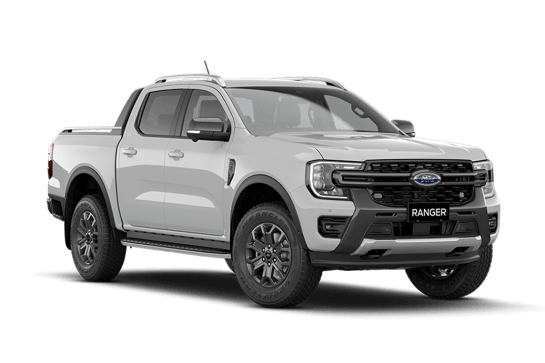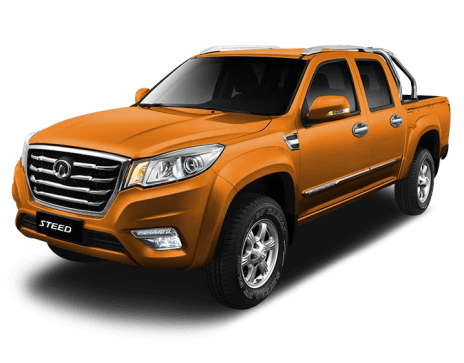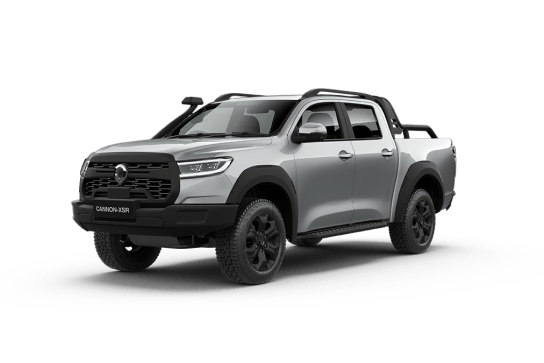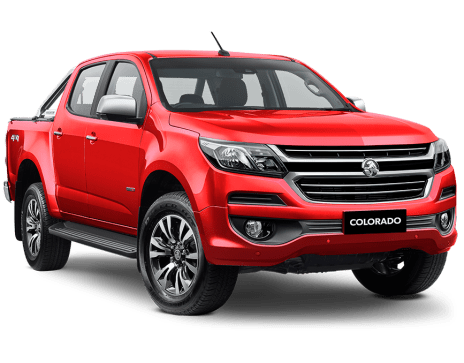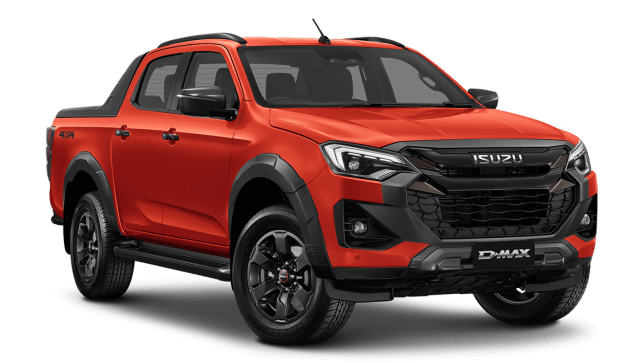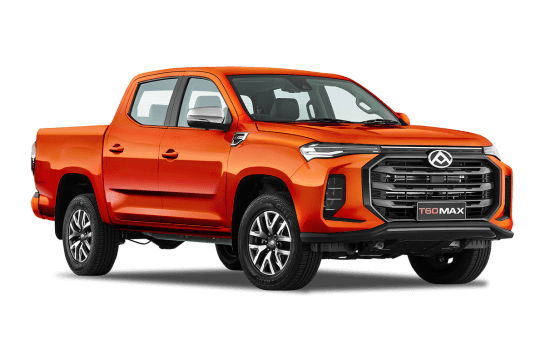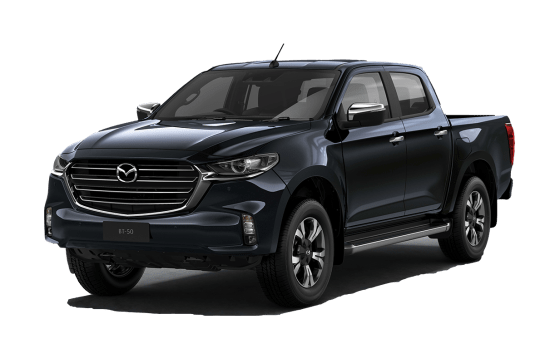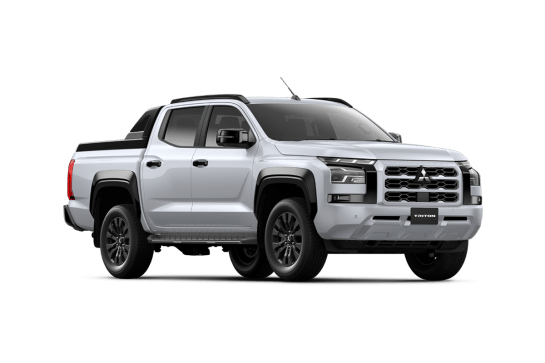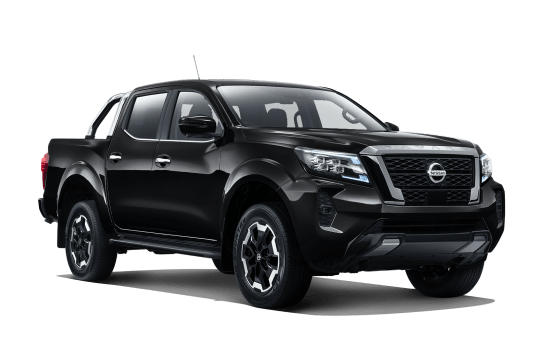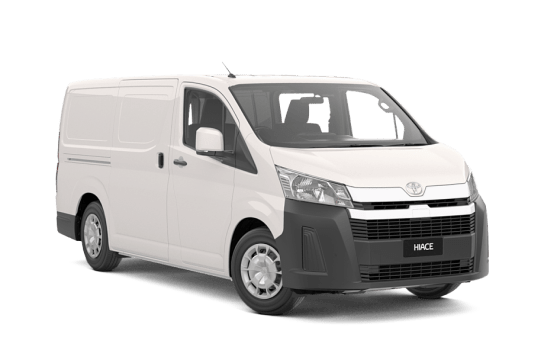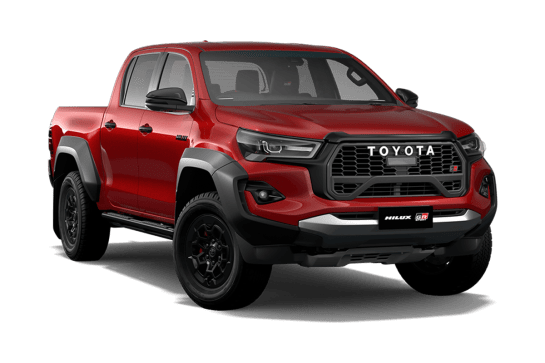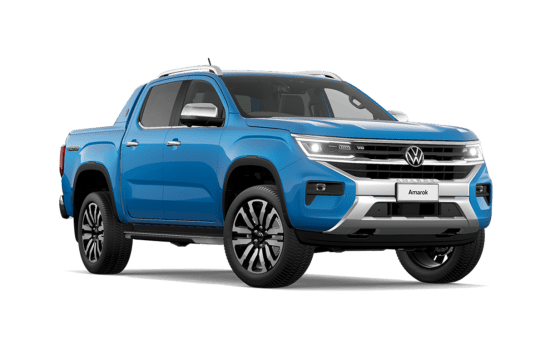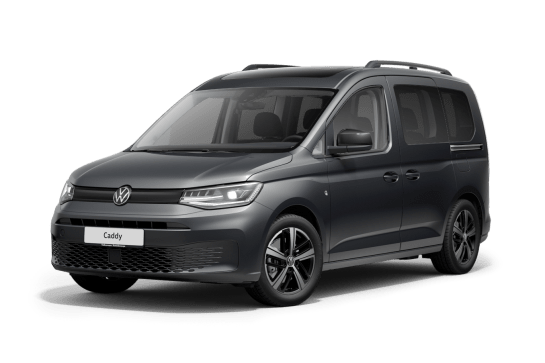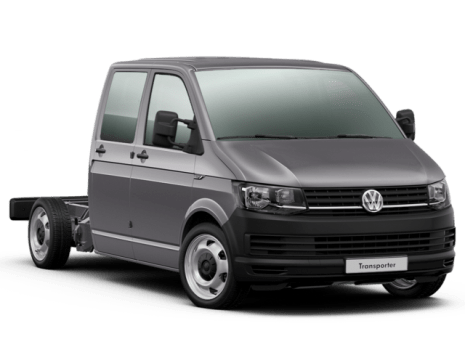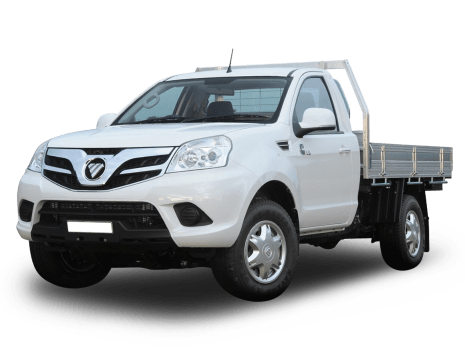
Foton Tunland VS LDV T60
Foton Tunland
Likes
Dislikes
LDV T60
Likes
- Overall value
- Refreshingly straightforward to drive
- Much improved safety suite
Dislikes
- Was expecting more from new suspension
- Software and on-board tech should be better
- Drivetrain still a bit rough around the edges
Summary
Foton Tunland
Beiqi Foton Motor Company Ltd (rolls off the tongue, doesn't it?), established in 1996, is one of China’s leading manufacturers of heavy-duty commercial vehicles. It also produces a light commercial range including the Tunland ute, which has ridden a rocky road in Australia with minimal sales traction since its local launch in 2012.
Back then distribution was handled by Queensland-based FAA Automotive Australia. In 2014, Ateco Automotive took over, but that only lasted until mid-2017, when Foton itself took charge of all Australian distribution and sales under the Foton Motor Australia Ltd banner.
A key factor in this move was a rationalisation of the local Tunland fleet, which now consists of only a dual cab ute. But through Foton’s numerous joint ventures with premium OEM suppliers (including Cummins, Borg Warner, Dana, Bosch and ZF), the latest Euro 5-compliant Tunland combines known brand components in a low-priced ute with which Foton plans to finally build a solid following.
| Safety rating | |
|---|---|
| Engine Type | 2.8L turbo |
| Fuel Type | Diesel |
| Fuel Efficiency | 8.3L/100km |
| Seating | 2 seats |
LDV T60
So, you’re after an affordable alternative to the increasingly expensive Toyota HiLux and Ford Ranger. You need it to be tough enough for work, but also big and comfortable enough to haul family every now and again.
It’s a common predicament, and one that's increasingly served by Chinese and Korean alternatives.
Today, we’re looking at LDV’s latest effort - the T60 Max Plus. While it looks like just another new variant from the outside, it’s hiding some significant changes underneath, and it takes its place at the top of the T60 range in 2024.
Read more about
- 2025 LDV GST next-gen electric ute here sooner than expected - what could be Australia's first electric 4x4 ute to arrive potentially before the end of 2024
- LDV defends eT60 electric ute as a 'necessary step' in the electrification of the commercial sector
- Most popular Chinese car brands in Australia in 2024: With models like the GWM Haval Jolion, Chery Omoda 5, BYD Seal and MG ZS, which carmaker is topping the charts?
Could it be the right ute to fit your budget? Let’s take a look.
| Safety rating | |
|---|---|
| Engine Type | 2.0L turbo |
| Fuel Type | Diesel |
| Fuel Efficiency | 9.3L/100km |
| Seating | 5 seats |
Verdict
Foton Tunland 7.4/10
The 2018 Tunland is a big improvement on any Chinese ute we’ve driven. Foton has done a commendable job in selecting known brand components and bringing them together into one cohesive package that delivers robust performance. Although it doesn’t quite equal the sum of its parts (mostly owing to poor safety features and some technical quirks), it’s still a lot of 4x4 dual cab ute for not a lot of money, and it's worthy of a test drive.
Does the Foton Tunland challenge negative perceptions of Chinese utes? Tell us what you think in the comments below.
LDV T607/10
The Max Plus brings a lot of welcome upgrades to the T60 range, particularly in its previously non-existent active safety suite, but it’s not all good news. There are still a few areas where this ageing ute could use a lot of polish.
Still, there’s something to be said for how refreshingly straightforward much of it is, and for the most part its specs and features are up to the task of competing with many more expensive alternatives.
Design
Foton Tunland
This is a big ute with an imposing presence, much like the Ford Ranger with which it shares similar dimensions (if not looks). Compared to the Ranger Wildtrak, the Tunland is 115mm shorter in wheelbase and 45mm shorter in overall length, but 20mm wider and 22mm taller. Ground clearance of 210mm is 27mm less and its kerb weight undercuts the Wildtrak by 250kg.
The Tunland uses traditional body-on-frame construction with a steel ladder-frame chassis, coil-spring twin-wishbone front suspension, leaf-spring live rear axle, four-wheel ventilated disc brakes and hydraulic power-assisted rack and pinion steering.
Chrome body highlights include the grille, driving lights, side mirrors, door handle inserts and body badges. The dashboard and interior trim feature strongly textured grey surfaces with a tasteful mix of piano black, chrome, satin chrome and carbon fibre-look highlights.
There’s good comfort for driver and front passenger, with a height-adjustable steering wheel and multi-adjustable driver’s seat with adequate under-thigh support that doesn’t feel too short like a Triton. The driving position is a big improvement on other Chinese utes we’ve tested, and is on par with many of the major players. The rear bench seat’s low cushion height results in raised upper thigh angles and knees, but also aids in providing unusually generous headroom, even for tall adults sitting in the higher centre position.
LDV T60
The T60 Max Plus takes the visage of a factory-kitted version of the existing T60 Plus. The most notable difference this time around is the unique gloss black grille design which features a new spot to hide the front radar array for the safety suite, alongside new gloss wheel designs and that huge sports bar fitting atop the tray.
To my eye at least the T60 looks a fair bit more rugged and industrial than most of its rivals, which with every iteration are looking more like passenger vehicles than work-ready utes. Still, there’s an aggressiveness to its contrast black trims and tall ride height which may appeal to some. For others it will be more function-over-form, with less bumper overhang than something like the SsangYong Musso and there’s something to be said for that, too, I suppose.
Inside is where this Max Plus version sets itself apart from the rest of the range with its abundance of screen real-estate, upgraded materials, and an almost EV-like centre console treatment.
It’s certainly more digital-feeling and contemporary than the rest of the T60 range, but it might lose some of the simple but rugged appeal of its interior as a result.
The screens look pretty slick, especially when you’re using phone mirroring to hide the otherwise clumsy stock software suite. It’s one thing to have nice big screens, it’s quite another to have slick, attractive, and customisable software to match.
Sadly, that’s not the case for the Max Plus, which offers one lacklustre look and feel for the dash cluster, paired with an array of confusing menus on the multimedia screen.
Practicality
Foton Tunland
Figures used here are provided by Foton Motor Australia Ltd and differ slightly from those shown in sales brochures. With a claimed kerb weight of 2000kg and 2925kg GVM, the Tunland is rated to carry a decent payload of up to 925kg.
It’s also rated to tow up to 3000kg of braked trailer, and with its 5925kg GCM, can tow that weight without having to reduce its peak payload, which gets a big tick from us.
Load tub dimensions of 1520mm length, 1580mm width and 440mm height provide more than a cubic metre of enclosed load volume. There’s also 1140mm between the wheel arches (not wide enough for a standard Aussie pallet) plus four sturdy tie-down points for securing loads.
Cabin storage options includes a bottle holder and pocket in each front door, a shallow tray inset in the centre dash pad, an overhead sunglasses holder and single glovebox. The centre console has an open cubby up front, two cup holders in the centre and a small lidded box at the back which doubles as a well-placed armrest.
Rear doors also have bottle holders and storage pockets, plus there are flexible storage pockets on the rear of each front seat and a fold out dual cup holder on the rear of the centre console. The rear bench seat’s base cushion also swings up through 90 degrees to reveal two hidden storage areas beneath for the wheel-changing tools and other smallish items.
LDV T60
There are some benefits of the new interior design, and there are some disappointments too. These begin with the seating position, which is still miles off the ground in its lowest setting. This might give you a commanding view of the road, which has benefits, but it also makes you feel like you’re sitting on the T60 rather than in it.
The steering wheel is also only pitch adjustable rather than also offering telescopic adjustment, and even then its range of movement is extremely limited. For me, at 182cm tall, this meant the wheel blocked the top of the digital instruments, and I also felt like I was far too close to the roof. It’s an awkward seating position to say the least.
However, the new cabin layout has quite a bit of storage to play with. There are functional bottle holders and pockets in the doors, a decent glove box, and the new centre console offers a huge tray underneath with a removable dual cup holder insert, which also has two little cutaways for storing your keys. This area also hides some USB ports and a 12-volt outlet, for a nice cable-free interior if need be. The armrest console box offers even more space, and the wireless phone charger perched atop the console area is a welcome touch.
Less impressive is the strip of touch-based controls for the climate which sits underneath the multimedia screen. At least it has some controls which don’t require a screen sub-menu to navigate, but it simply doesn’t compare to having actual buttons and dials.
The most puzzling part of this equation is the lack of physical controls of any kind for the headlights, and no way for the passenger to adjust volume without needing to go one or two sub-menus deep. Inconvenient at best, potentially dangerously distracting at worst.
Again, some rivals get an edge here. The Musso’s multimedia suite looks comparatively old, but has heaps of physical buttons, while the GWM Ute Cannon splits the difference, maintaining buttons but gaining confusing menus. Both are better to use than the T60.
The back seat came as a surprise, as it offers pretty decent legroom for a full-sized adult, something quite rare in this ute segment. It also offers pockets on the backs of both front seats, dual adjustable air vents and a USB port on the back of the centre console, two small bottle holders in the doors, and a further two in a centre drop-down armrest. Underneath the seats there’s access points to small storage areas below.
The tray area seems reasonably well appointed with a pre-applied spray-in tub liner and four tie-down points at the extremes of the bed. The tub dimensions come in at 1485mm long, 1131mm wide (between the arches), and 530mm tall for the standard version. The Mega Tub variant extends the length to 1800mm. Payload for the tray is 840kg for the manual, 830kg for the auto, and 800kg for the Mega Tub.
Interestingly, despite its new coil-sprung rear, the T60 Max Plus maintains its 3000kg braked towing capacity, which isn’t the 3500kg industry standard, but is pretty close.
These specs mean the standard tray version is slightly larger than the Ssangyong Musso with a slightly higher payload, although it can tow 500kg less. It has a lower payload and a smaller tray than the GWM Ute, although it can tow about the same amount.
Price and features
Foton Tunland
The Foton Tunland is made in two model grades – the H-series (High End) and S-series (Super Value). The S-series (which is not sold here) is a low-cost, steel-wheeled version with components sourced from Chinese suppliers. The H-series is the premium model sold in Australia, so don’t let the red S badge on the tailgate confuse you as it did us at first. The S badge stands for Sport (not Super Value) and is only affixed to H-series vehicles.
The Tunland range comprises 4x2 manual ($26,990), 4x4 manual ($29,990), 4x4 auto ($33,990) and, thanks to its leather seats, 4x4 auto Luxury ($35,490). The 4x4 manual Luxury has recently had a big price reduction from $30,990 to $27,990, reflecting Australia’s growing preference for automatic transmissions.
Our test vehicle is the 4x4 auto, which for a snip under $34,000, brings numerous useful and desirable features including 17-inch alloys and beefy 265/65R17 road-biased tyres with matching spare, power/heated door mirrors, daytime running lights, side steps, auto headlights, rear-view camera and rear parking sensors, leather-trimmed steering wheel with audio/cruise control buttons, power windows, four-speaker sound system with multiple connectivity, eight-way (manual) adjustable driver’s seat and more. Plus there’s an extensive range of accessories.
LDV T60
The T60 Max Plus is the new top-spec version of one of Australia’s most affordable new utes. From the outside it looks very similar to the Max Luxe which sits below it, but hides re-worked suspension, an overhauled interior, and some extra safety kit behind its tweaked grille.
It also continues to be available as a manual at $48,411, an automatic at $50,516 and as an extended ‘Mega Tub’ version at $52,092. LDV deals in drive-away pricing, and you’ll note these prices are roughly equivalent to low-grade versions of the industry leading utes like the Ford Ranger and Toyota HiLux.
The T60 is more likely, however, to compete with other low-cost ute options, like the GWM Ute Cannon also from China (from $52,990 in equivalent XSR form) or the SsangYong Musso from Korea (from $49,500 in equivalent Ultimate form).
Standard equipment is reasonably impressive, with 18-inch gloss black alloys, LED headlights, a sports bar out the rear, spray-in tub liner, a locking tailgate (for the first time), and an abundance of gloss black highlight trims to separate it from lesser models in the range.
On the inside the highlight of the overhauled design is the dual 12.3-inch screens which make up a dash-spanning digital suite. It comes with new-ish software which looks the part at a distance, although I was a little dismayed to discover it had limited functionality, only one ugly theme for the dash cluster, and minimal customisation.
You also score (very) synthetic leather seat trim with power adjust for the driver and front passenger, and an expanded array of soft-touch surfaces throughout. It looks modern and plush from a distance, but feels less impressive once you’re actually inside.
If you want a ute which does a better job of feeling more like a luxurious passenger car, the SsangYong Musso leans into this aspect harder, and if you want something that's bit more accessorised for the rough stuff the GWM Cannon XSR looks more the part. Ultimately it feels as though this new top-spec T60 is left in something of an awkward middle ground between the two.
Of course, the new safety equipment and suspension do add something to the T60 formula, but we’ll talk more about these later in the review.
Under the bonnet
Foton Tunland
One of the Tunland’s strong points is its Euro 5-compliant 2.8-litre four-cylinder Cummins ISF turbo-diesel, which Foton claims is the first ute in the world to be powered by this engine. It delivers 130kW at 3600rpm and 365Nm across a pretty flexible 1600-3200rpm torque band.
The smooth-shifting six-speed German automatic behind it is from another premium OEM supplier in Friedrichshafen AG, better known as ZF. Its gearing and shift protocols are well matched to the engine’s characteristics, offering a choice of full-auto mode or sequential manual shifting. Console buttons also provide a choice of Economy, Sport or Snow driving modes.
American OEM giant Borg Warner supplies the part-time, dual-range 4x4 transfer case, while another major US supplier - Dana - has its stamp on the front drive-shafts and live rear axle assembly, featuring a 3.9:1 final drive and limited-slip differential. There’s no locking rear diff option available.
LDV T60
The T60 Max range lays claim to one of the most powerful 2.0-litre four-cylinder diesel engines - a bi-turbo unit producing 160kW/500Nm with peak torque arriving from 1500rpm.
It is mated to either a six-speed manual, or an eight-speed ZF-sourced torque converter automatic transmission.
It has a 2H, 4H, and 4L selector (alongside an automatic setting for the Plus Max), and is equipped with a rear differential locker (which can only operate below 30km/h).
For those looking to venture well beyond the tarmac the T60 Max Plus has a 27-degree approach angle, a 24-degree departure angle, 220mm of ground clearance, and a 19-degree rampover angle. Wading depth is 550mm, and it has a 12.7-meter kerb-to-kerb turning circle.
Efficiency
Foton Tunland
Foton’s official combined figure is 8.7L/100km but our ‘real world’ road test figures based on fuel bowser and trip meter readings came in at 12.2 (after 503km) and 12.1 (after 297km). Based on those figures, you could expect a driving range of around 620km from its 76-litre tank. However, after only 500km the fuel gauge needle was nudging the red zone and the low-fuel warning light came on, so we weren’t game to find out if there was another 100km-plus of driving available from the theoretical fuel remaining.
LDV T60
The official combined fuel consumption of the diesel-only Max Plus is 9.3L/100km for the manual or 8.9L/100km for the automatic.
With over 500km of testing with plenty of freeway miles, our automatic example produced an as-tested number of 9.3L/100km.
Driving
Foton Tunland
It’s a tight build free of rattles and squeaks, but the ride is too firm when empty or lightly loaded, particularly in the leaf-spring rear suspension which feels every small bump and delivers a sharp kick in your back over larger ones.
Otherwise, the chassis performance is more than adequate with its four-wheel disc brakes and steering that’s responsive and nicely weighted. Engine refinement and noise insulation are not best in class, but at highway speeds the combined engine, tyre and wind noise is certainly low enough to allow conversations without raised voices. The Cummins fairly lopes along here, with only 1800rpm at 100km/h and 2000rpm at 110km/h.
It’s also quite an agile and energetic performer around town, particularly in Sport mode. Maximum torque of 385Nm from the Cummins diesel is far from the strongest in this category, but the Tunland’s relatively low kerb weight helps to compensate for it with brisk getaways from standing starts and good throttle response in city and suburban driving.
To test its GVM rating we strapped 770kg into the load tub, which with driver was only about 50kg short of its 925kg payload limit. The rear springs compressed 50mm while the nose rose 18mm. This resulted in a near-level ride height and noticeably improved ride quality, with no major decline in steering or braking response.
With this load it was a competent performer on a variety of sealed and unsealed surfaces, including some bush tracks on which we engaged in both high and low range 4x4. Back on the bitumen, it also coped well with our two kilometre, 13 per cent gradient set climb, maintaining the 60km/h speed limit in third gear at 2250rpm all the way to the top.
Engine braking on the way down, though, was compromised by the auto transmission’s unusual shift protocols. With second gear manually selected (in sequential shift mode) it over-rode that selection and shifted up to third when the engine reached 3250rpm on over-run. We tried it again several times and got the same result.
Not sure if it’s an engine protection measure on Foton’s part (redline is 4000rpm) but it’s not a nice surprise when you’re heavily loaded on a steep descent and relying on engine braking to help restrain your speed.
Our only other gripes were poor radio reception on the AM band (too bad if you like talkback) and the cruise control, which stopped working during our test and would not switch back on.
LDV T60
The T60 Max Plus has improved the formula in a few ways, but still feels a bit rudimentary in others.
The awkward seating position does provide quite a commanding view of the road, and makes it easy to gauge where the end of the bonnet is. This is useful parking in a city, but will also have benefits off the road. The 360-degree camera suite also helps with this manoeuvrability.
Interestingly the steering is quite good. This Max Plus is the only variant to score a fully electric power steering rack, as opposed to the lesser power assisted steering rack. It’s initially alarmingly light, but it also makes the T60 a breeze to steer unlike some utes in this class, and I was surprised to find it still had a sufficient amount of feel to give it confidence in the corners.
Yes, this is one of the most powerful 2.0-litre diesels, but it doesn’t feel particularly overwhelming to drive. The transmission, too, despite the brand bragging about its ZF sourcing, feels a bit transparent and rudimentary lumping through the gears with a degree of clumsiness. Still, it’s predictable and does what it says on the tin.
The same goes for the 4H and even ‘automatic’ 4x4 settings, which I found was surprisingly quick to activate if you started slipping on mud or wet tarmac.
Another less than impressive trait is the amount of sound produced. Supposedly this Pro Max version has additional sound deadening over the other variants, and yet the clatter of the diesel engine proved a constant in the cabin at freeway speeds or any time you needed to accelerate hard.
This particular version of the T60 should also feature an improved ride compared to its relations thanks to swapping the leaf sprung rear suspension out for coils, but I was surprised to find it was still quite stiff. No doubt this inherent hardness is down maintaining the same towing capacity. It makes it a bit jiggly when you drive it over the regular sort of road imperfections and corrugations. One wonders what the point of having coil spring suspension is at all if it’s going to feel more or less the same as leaf sprung alternatives.
One area that was particularly pleasing to me was the way the new active safety equipment wasn't overly invasive. There were a few moments where the lane keep tech intervened a bit too hard, but it’s pretty hands off as far as the rest of the systems go.
Overall then it does what it says on the tin, and is surprisingly easy to steer, although it doesn’t really excel at anything, which can be a hard sell in an environment where many utes are more passenger car like than ever.
Safety
Foton Tunland
Its three-star (out of five) ANCAP safety rating is poor, with single airbags for driver and front passenger only.
Bosch electronic stability control includes brake-force distribution and hill-start assist, but there's no trailer sway control or AEB. The rear seat offers three head restraints and lap-sash belts. There are also ISOFIX attachments on the two outer seating positions, but no top tethers. Foton says it has identified differences in ISOFIX fittings between China and Australia, which it is now addressing for future export models.
LDV T60
Perhaps one of the biggest pieces of new equipment on the T60 Max Plus is the more competitive array of safety equipment than before. It includes auto emergency braking, lane keep assist with lane departure warning, and adaptive cruise control. It also gains a set of front parking sensors to add to its 360-degree parking camera suite.
Technically the LDV T60 range maintains a maximum five-star ANCAP rating, but it dates back to 2017 and is thus about to expire. It has a total of six airbags, consisting of dual front, side, and curtain.
Ownership
Foton Tunland
Expect a three year/100,000km warranty and service intervals of six months/10,000km whichever occurs first. Roadside assistance is also available.
LDV T60
LDV continues to have a confusing array of ownership terms across its range. In the case of the T60, it’s seven years and 200,000km, with five years of roadside assist.
It is also one of the only brands on the market not offering any kind of capped-price service program, so it’s a mystery how much it will cost to run. Servicing is required once every 12 months or 15,000km.

